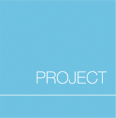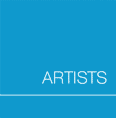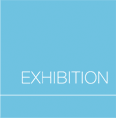|
Cloth & Culture
NOW
the artists - Aune Taamall, Estonia
The significance and influence of Estonian
culture in my work cannot be undervalued. I was born and raised
in this cultural space, and so it could be said that I breathed
this air.
Whether I like it or not, Estonian cultural
traditions have formed my persona and values. Different aspects
of culture have certainly influenced the world of my thoughts and
actions: I love to read a lot, visit exhibitions, the theatre and
concerts. Keeping up with the work of other artists has also had
an impact on my own self-expression, as has my lengthy involvement
with classical music during my school years. Of course, when thinking
about culture one cannot be limited only to intellectual expression.
National culture stems from our home and the way we as free people
exist, act and behave in that home. Our own personal cultural
dimension arrives via an intellectual network involving the work
of all creative people throughout the cultural history of Estonia –– people who have lived
and worked in this cultural space.
Not surprisingly, I believe
that Estonian culture is also evident in my work, even if only
as a feeling because I haven’t expressed or emphasized it
directly. With folk ornamentation it is the same –– it’s
very hard to draw the line between where the stylistic characteristics
of one nation ends and that of the next starts. We can see how
the language of design is often applied in almost identical ways
by artists from different countries and different times. Our primal
knowledge about the world, creation and the history of humankind
has been preserved and protected in designs, sketches and ornaments
passed from one generation to another. It is largely thanks to
national traditions and archetypal elements that the intellectual
nature of human beings, the unity of all humankind and of all cultures
as well as the notion of inner relationships lives on in modern
society.
Combining traditional patterns and techniques
with the latest technological inventions and materials and contemporary
approaches ensures the permanence and continuity of culture. In
Estonia, a society now open to the world, the folkloric, pan-European
and universal human dimensions have also become naturally and freely
united in the arts.
I also believe that my work contains not only
references to the culture of Estonia, but also of other countries.
I have been inspired by Estonian ethnographic motifs, Finno-Ugric
ornamentation, medieval stained glass windows and oriental mandalas.
I am fascinated by non-figurative forms of expression –– all
kinds of symbols and abstract figures from different religions.
The theme running through my work is "uprising". I use
vertical movement and the symbolism of upward movement inspired
by Gothic cathedrals. The sacred world of ideas with its transcendental
categories has intrigued me time and again and has always been
important to me. I associate it with a certain rebellion against
the excessive rationality of ordinary life, as well as with a demand
to be cognizant of the world metaphysically and beyond reason.
Mystical experiences born in my inner self find expression through
my textile works, for example, with the help of angels and resurrected
masters. Likewise, I am fascinated by Sacred Geometry and labyrinths.
I have used circular and spherical forms that express the highest
level of unity, completeness and wholeness, and these also embody
simplicity and emptiness, the world in a perpetual process of creation.
Patterns that function and follow the rules of Sacred Geometry
are being created and perfected every moment, and still they continue
in a permanent state of motion and variation.
For me the process
of creation itself is important, and naturally also the outcome –– the
piece of work, which has the power to communicate with the viewer,
to take him or her to a higher level of resonance, to heal, to
mediate the light and love of the intellectual source –– a
source where everything, including creation, has flowed forth and
is universal, lasting across borders, cultures and ages. Aesthetic
quality becomes critical. The final result has to fit into the
framework of the laws for beauty and harmony, where the energy
of life and art have been melded into one. My work is bound up
with the stages of the journey of my personal development.
The
continuing process of discovering myself and searching for the
essence of a deeper self is also reflected in the progress of my
creative processes. Remaining at a higher state of consciousness,
reminding the body of light, opening up to multidimensional experience –– this
is the source of my inspiration. This extended consciousness incorporates
in itself boundless opportunities to create truly unique forms
and expressions. There are no limits as such here. It can be complicated
creating a work about intellectual visions, finding a physical
form and material for something that is profoundly immaterial,
outside time and space. Therefore, I have chosen materials and
techniques that express an imaginary fragility and subtlety. I
use loose weave, laced embroidery, transparent and sheer textiles,
which when layered and penetrated by light, can create a vision
of higher dimensions and dreamlike worlds. In the first place,
the work has to inspire me, I must be emotionally charged myself
and engaged in the process of doing –– then the completed
work can begin "to sing". The artist, in the process
of creating, is a servant of his or her internal God. Attempts
at interpreting art are often superficial and can conceal the most
important with a veil of ideas, so the reader is deprived of his
or her own response. The world of art opens its internal secrets
only when one perceives the work immediately, without such interpretations
and self-important analysis.
|









